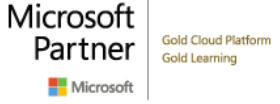Description
- Date: January 25 – 29, 2021 | 8:30 AM – 4:30 PM EST
–(Guaranteed To Run)–CLASS IS FULL. Please register for another class.
- Date: February 01 – 05, 2021 | 8:00 AM – 4:00 PM PST
–(Guaranteed To Run)– 8 Seats Left. Register Early to secure class
- Date: February 22 – 26, 2021 | 8:30 AM – 4:30 PM EST
–(Guaranteed To Run)– 8 Seats Left. Register Early to secure class
- Date: March 01 – 05, 2021 |9:30 AM – 5:30 PM EST -13 Seats Left. Register Early to secure class
- Date: March 08 – 12, 2021 | 8:30 AM – 4:30 PM EST-15 Seats Left Register Early to secure class
- Date: March 15 – 19, 2021 | 11:30 AM – 7:30 PM EST-15 Seats Left Register Early to secure class
These classes dates receive $300.00 Discount for registrations completed before 03/20/21
- Location: ONLINE
Dates are not a fit? Ask about Private Lead Classes for your company team, with 6 or more employees.
Classroom Live Online Outline
- Overview of systems management by using enterprise management solutions
- Overview of the Configuration Manager architecture
- Overview of the Configuration Manager administrative tools
- Tools for monitoring and troubleshooting a Configuration Manager site
- Introduction to queries
- Configuring Microsoft SQL Server Reporting Services (SSRS)
- Analyzing the real-time state of devices by using CMPivot
- Configuring site boundaries and boundary groups
- Configuring resource discovery
- Organizing resources using devices and user collections
- Overview of the Configuration Manager client
- Deploying the Configuration Manager client
- Configuring and monitoring client status
- Managing client settings and performing management operations
- Overview of inventory collection
- Configuring hardware and software inventory
- Managing inventory collection
- Configuring software metering
- Configuring and managing Asset Intelligence
- Preparing the infrastructure for content management
- Distributing and managing content on distribution points
- Overview of application management
- Creating applications
- Deploying applications
- Managing applications
- Deploying virtual applications by using System Center Configuration Manager (Optional)
- Deploying and managing Windows Store apps
- The software updates process
- Preparing a Configuration Manager site for software updates
- Managing software updates
- Configuring automatic deployment rules
- Monitoring and troubleshooting software updates
- Enabling third-party updates
- Overview of Endpoint Protection in Configuration Manager
- Configuring, deploying, and monitoring Endpoint Protection policies
- Configuring and deploying advanced threat policies
- Overview of compliance settings
- Configuring compliance settings
- Viewing compliance results
- Managing resource and data access
- An overview of operating system deployment
- Preparing a site for operating system deployment
- Deploying an operating system
- Managing Windows as a service
- Configuring role-based administration
- Configuring Remote Tools
- Overview of Configuration Manager site maintenance and Management Insights
- Backing up and recovering a Configuration Manager site
- Updating the Configuration Manager Infrastructure
LABS
Exploring the Configuration Manager Tools
- Searching in the Configuration Manager console
- Using Windows PowerShell with Configuration Manager
- Using Configuration Manager Service Manager to manage components
- Monitoring site and component status
- Reviewing log files by using the Configuration Manager Trace tool
- Creating data queries
- Creating subselect queries
- Configuring a reporting services point
- Analyzing the real-time state of a device by using CMPivot
- Using CMPviot to Anlyze the current state of devices
- Configuring boundaries, boundary groups, and fallback relationships
- Configuring Active Directory discovery methods
- Creating a device collection
- Creating a user collection
- Configuring a maintenance window
- Preparing the site for client installation
- Deploying the Configuration Manager client software by using client push installation
- Configure and monitoring client health status
- Configuring client settings
- Performing management operations
- Configuring and management hardware inventory
- Configuring software metering
- Preparing the site for Asset Intelligence
- Configuring Asset Intelligence
- Monitoring license agreements by using Asset Intelligence
- Viewing Asset Intelligence reports
- Installing a new distribution point
- Managing content distribution
- Creating applications with requirements
- Deploying applications
- Managing application supersedence
- Uninstalling the Excel Viewer application
- Deploying virtual applications
- Configuring support for sideloading Windows Store apps
- Configuring a Windows Store app
- Deploying Windows 10 apps to users
- Configuring and synchronizing the software update point
- Determining software update compliance
- Deploying software updates to clients
- Configure automatic deployment rules
- Configuring the System Center Endpoint Protection point and client settings
- Configuring and deploying Endpoint Protection policies
- Monitoring Endpoint Protection
- Creating and deploying advanced threat protection policies
- Managing configuration items and baselines
- Viewing compliance settings and reports
- Configuring remediation in compliance settings
- Using compliance information to create collections
- Configure compliance settings
- Managing the site system roles used to support operating system deployment
- Managing packages to support operating system deployment
- Preparing the operating system image
- Creating a task sequence to deploy an image
- Deploying an image
- Configuring a new scope for Toronto administrators
- Configuring a new administrative user
- Configuring the Remote Tools client settings and permissions
- Managing desktops by using Remote Control
- Configuring maintenance tasks in Configuration Manager
- Configuring the Backup Site Server task
- Recovering a site from a backup





